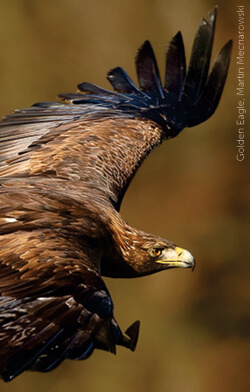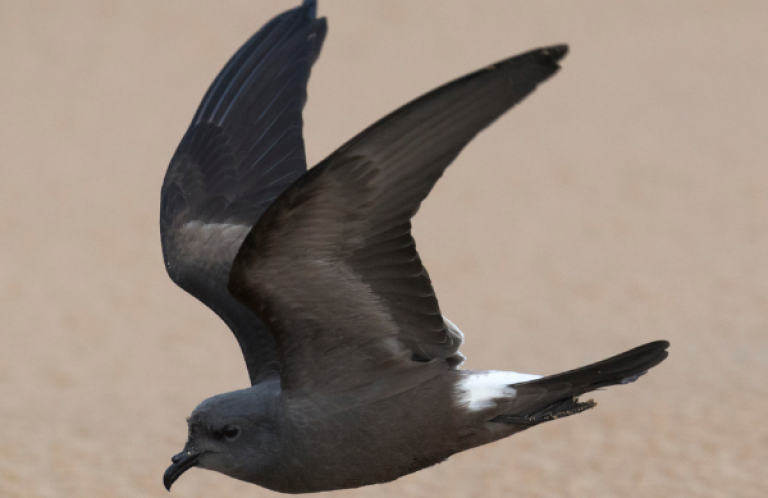Leading Bird Group Files Petition to Regulate the Wind Industry
 |
(Washington, D.C., February 13, 2015) American Bird Conservancy (ABC) has filed a formal petition with the U.S. Department of the Interior (DOI) calling for the agency to establish new regulations governing the impacts of wind energy projects on migratory birds.
The ABC petition was filed on February 12, 2015 and includes substantial revisions to an earlier petition filed by ABC in December 2011 that also called for wind industry regulatory action that would reduce the projected 1.4-2 million bird deaths expected to be caused by the industry when it reaches projected build out levels.
“This petition includes new information that further makes the case for wind industry regulation,” said Dr. Michael Hutchins, National Coordinator of ABC's Bird Smart Wind Energy Campaign. “We have added examples of new science and prototype mechanisms that would make it possible to finally enforce the Migratory Bird Treaty Act (MBTA).”
A key provision of the ABC petition would have the Department of Interior's Fish and Wildlife Service (FWS) establish a permitting process that would significantly improve the protection of birds covered by the MBTA and would afford the wind industry a degree of regulatory and legal certainty that cannot be provided in the absence of such a process.
“This is the second time we have petitioned for improvements on the permitting issue—this time with new and even stronger arguments– and it appears that FWS is now starting a process that could lead to that becoming a reality,” Hutchins said in reference to FWS filing a Notice of Intent to take action, with the Office of Management and Budget this past week, on this issue.
“We recognize that properly sited and operated wind energy projects may be an important part of the solution to climate change, a contemporary challenge that indisputably poses a rapidly growing threat to species and ecosystems,” Hutchins said.
But ABC said further that, if not done right, wind energy also poses a serious threat to various species of birds, including birds of prey such as the Bald Eagle, Golden Eagle, Ferruginous Hawk, Swainson's Hawk, Short-eared Owl, and Flammulated Owl; endangered and threatened species such as the California Condor, Kirtland's Warbler, Whooping Crane, Snail Kite, Marbled Murrelet, Hawaiian Goose, and Hawaiian Petrel; and other species of special conservation concern such as the Bicknell's Thrush, Sprague's Pipit, Cerulean Warbler, Oak Titmouse, Lewis's Woodpecker, Brewer's Sparrow, Long-billed Curlew, Bay-breasted Warbler, and Blue-winged Warbler.
“These species are impacted by existing wind energy projects and threatened by potential projects primarily through collisions with wind turbines and associated power lines and towers, and through loss or modification of essential habitat,” said Hutchins.
Based on the operation of a mere 22,000 turbines, FWS estimated that at least 440,000 birds– including threatened and endangered species—were being killed per year by wind turbines in 2009. Since then, another peer-reviewed study expanded that estimate to 573,000 in 2012. By 2030 or perhaps even earlier, a ten-fold increase in the number of wind turbines in the United States is expected, which together are projected to kill between 1.4 -2 million birds each year. ABC believes this number will be exceeded significantly, especially because these estimates do not include mortality at associated power lines and towers, which are also undergoing massive expansion and currently kill over 6.8 million birds annually. Further, wind energy projects are expected to impact almost 20,000 square miles of terrestrial habitat and another 4,000 square miles of marine habitat.
The MBTA, Endangered Species Act (ESA), and the Bald and Golden Eagle Protection Act (BGEPA), prohibit “take” of migratory birds, endangered and threatened species, and Bald and Golden Eagles. (Federal regulations define the term “take” to include wounding or killing, or attempting to wound or kill.) Bald and Golden Eagles are protected under both MBTA and BGEPA, and many species listed under the ESA are also protected under the MBTA, such as Whooping Cranes, California Condors, Least Terns, Kirtland's Warblers, Northern Aplomado Falcons, Roseate Terns, and Piping Plovers.
While the ESA and BGEPA provide mechanisms for FWS to regulate, and in some instances authorize, take of endangered and threatened species and Bald and Golden Eagles respectively, at present no such comparable mechanism exists under the MBTA to limit or authorize incidental take by wind power projects.
”In effect, the MBTA is not being enforced, except perhaps under very special circumstances,” said Hutchins. “This reality is particularly significant for the wind industry because wind energy projects will inevitably take birds protected under the MBTA. In fact, because it is virtually impossible to operate a wind energy facility without killing or injuring at least some migratory birds, most operational wind energy projects are in ongoing violation of the MBTA, and are effectively breaking the law with impunity.”
In addition, federal officials are aware of other wind energy projects that are being planned that will also take migratory birds in violation of federal law. Many of those projects are located in or near Important Bird Areas (IBAs) or in major migratory bottlenecks, such as the south shore of Lake Erie or northern shores of Lake Michigan and Lake Huron.
The wind industry is now operating under “voluntary” instead of mandatory regulatory guidelines. These optional operating sideboards have paved the way for widespread disregard of the legal mandates the FWS is entrusted to enforce. The ABC petition supports “Bird-Smart” wind energy, which requires independent, science-based risk assessment leading to careful siting; effective mitigation; independent, transparent post-construction monitoring of bird kills; and compensation if public trust resources are being taken. Bird-Smart wind energy is therefore designed to reduce and redress any unavoidable bird mortality and habitat loss.
American Bird Conservancy is the Western Hemisphere's bird conservation specialist—the only organization with a single and steadfast commitment to achieving conservation results for native birds and their habitats throughout the Americas. With a focus on efficiency and working in partnership, we take on the toughest problems facing birds today, innovating and building on sound science to halt extinctions, protect habitats, eliminate threats, and build capacity for bird conservation.


















































